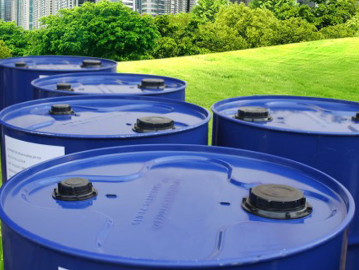Polyether amine is a versatile chemical compound due to its unique combination of properties and wide range of applications. Here are some factors that contribute to its versatility:
1. Structure: Polyether amine is a polymeric compound composed of repeating units of ethylene oxide and propylene oxide. This structure provides flexibility, allowing the compound to adopt various molecular shapes and conformations. This flexibility enables polyether amine to be modified and tailored to meet specific requirements for different applications.

2. Amine Functionality: Polyether amine contains amine groups, which contribute to its reactivity and versatility. Amines are known for their ability to act as nucleophiles and form covalent bonds with various functional groups, such as isocyanates, epoxides, and carboxylic acids. This reactivity makes polyether amine a valuable compound for crosslinking, polymerization, and other chemical reactions.
3. Molecular Weight Range: Polyether amine is available in a wide range of molecular weights, typically ranging from a few hundred to several thousand Daltons. The choice of molecular weight allows for flexibility in controlling the physical and chemical properties of the resulting materials. Low molecular weight polyether amines tend to have good low-temperature flexibility, while high molecular weight ones offer better mechanical strength and thermal stability.
4. Hydrophilic Character: Polyether amine possesses a high number of oxygen atoms in its structure, which imparts hydrophilic properties. This characteristic enables polyether amine to form stable dispersions or solutions in polar solvents, such as water and alcohols. It also allows the compound to act as an effective emulsifier and surfactant, making it useful in various formulations, such as coatings, adhesives, and personal care products.
5. Thermoplasticity: Polyether amine can exhibit thermoplastic behavior under certain conditions. This means that it can be melted, molded, and reshaped when heated, making it suitable for applications in the plastics industry. The ability to process polyether amine at elevated temperatures allows for the production of complex shapes and the incorporation of additional components or fillers into the final product.
6. Compatibility: Polyether amine is compatible with a wide range of polymers, including polyurethanes, epoxies, polyesters, and polyamides. This compatibility enables effective blending or modification of these polymers, resulting in improved properties and performance. For example, polyether amine can enhance the flexibility, adhesion, hardness, or chemical resistance of the base polymer through copolymerization or physical blending.
7. Performance Enhancements: Polyether amine can enhance the properties of various materials. It can improve the toughness and impact resistance of thermosetting resins, enhance the elasticity and flexibility of polyurethane foams, increase the adhesion strength of coatings and adhesives, and provide corrosion protection in metal coatings. The ability of polyether amine to impart multiple beneficial characteristics to different materials contributes to its versatility.
8. Compatibility with Various Processing Methods: Polyether amine can be easily incorporated into different manufacturing processes, such as solvent-based, water-based, and hot-melt systems. It can be applied by spraying, dipping, rolling, or casting, depending on the specific requirements of the application. This compatibility with various processing methods makes polyether amine a versatile compound for diverse industries.
In conclusion, the unique structure, amine functionality, molecular weight range, hydrophilic character, thermoplasticity, compatibility, and performance-enhancing abilities of polyether amine contribute to its versatility as a chemical compound. Its wide range of applications in industries such as automotive, construction, electronics, coatings, and adhesives highlight its importance and usefulness in various manufacturing processes.